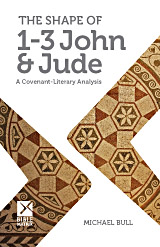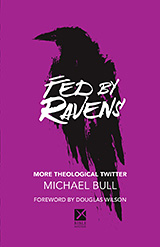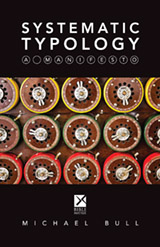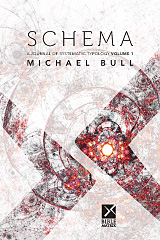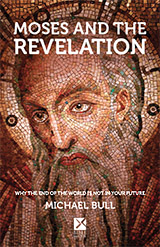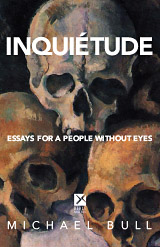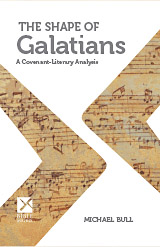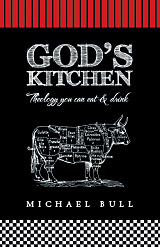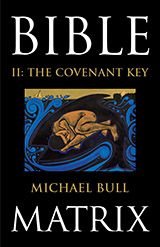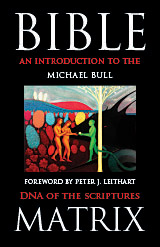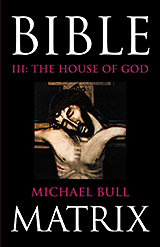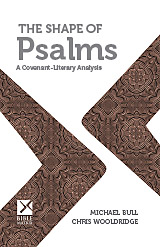Jan
28
2012

“For by one Spirit are we all baptized into one body,
whether we be Jews or Gentiles, whether we be bond or free;
and have been all made to drink into one Spirit.” 1 Cor. 12:13
On the BH forum, Michael Jones observed:
“If you look up the words for “drinking into” lexically (Strong’s), you come up with the idea of plants being irrigated and soaking up water through the roots. Is this somewhat valid? Are we like a bunch of trees around an oasis in the desert?” [1]
I believe that very often, the word choices of the biblical writers are hints to the literary structure — especially when their word choices are a little unexpected or ambiguous. This one isn’t unexpected, but perhaps that’s because we are so familiar with this passage. It really is an odd turn of phrase. Could the Bible Matrix shed any light on it?
Continue reading
Comments Off | tags: Baptism, Covenant Theology, Exodus, Feasts, Galatians, Literary Structure, Paul, Systematic typology, Tabernacle, Veil | posted in Bible Matrix, Biblical Theology
Dec
19
2011

The systematic typology of the Bible Matrix allows us to follow the structures of the Torah thoughout the rest of the Bible. Here’s something that links the Restoration era with the book of Deuteronomy.
Continue reading
Comments Off | tags: Baptism, Deuteronomy, Esther, Exodus, James Jordan, Jeremiah, Mordecai, Moses, Systematic typology, Tabernacle, Ten Commandments, The Law | posted in Biblical Theology, Quotes, The Restoration Era
Dec
3
2011
1 Peter 2:4-10 | Sermon Notes

The Stoning of Israel
I think it’s worth looking at the literary structure of this passage. Here’s a revised version of the sheet I handed out after the sermon.
As I’ve written before, modern readers (and commentators) only look at the content of the text, but the authors of Scripture also communicate to us through where they place that content within that text, i.e. how it is arranged.
Continue reading
1 comment | tags: Baptism, Covenant curse, Covenant Theology, Literary Structure, Lot, Moses, Peter, Ruth, Systematic typology, Tabernacle, The Law, Typology | posted in Bible Matrix, Biblical Theology
Oct
6
2011

or The Changing of the Guard
Structure of Daniel 7 – Part 2
“You shall not at all do as we are doing here today — every man doing whatever is right in his own eyes.” (Deuteronomy 12:8)
And the people kept shouting, “The voice of a god and not of a man!” (Acts 12:22)
We’ve seen the source of Daniel’s Transcendent vision in Creation, the calling out of a new Gentile Hierarchy to shelter Israel in Division, and their forming, lifting up, into a new, greater Altar-Land at Ascension. We are up to Testing, and just like the original Covenant pattern in Eden — or just unlike it, actually — at the centre of Daniel 7 is the judgment of the deceiver under the Ethics of the Law.
Continue reading
Comments Off | tags: antichrist, Daniel, Herod, Literary Structure, Systematic typology | posted in Bible Matrix, Biblical Theology, The Last Days, The Restoration Era
Aug
23
2011
or Feasts in Joel 1

The prophets were God’s “Covenant sheriffs,” hammering on the door with the broken contract like repo men from hell. They don’t want your car. They want your blood.
It should not surprise us when their words follow the Covenant structure. The first chapter of Joel is, once you know what you are looking at, a beauty and a terror. The prophet uses the Annual Feasts as a theme. It turns out that the Lord’s rebellious people will be the meat on the table.
Continue reading
Comments Off | tags: Feasts, Joel, Literary Structure, Minor Prophets, Systematic typology, Tabernacle, Tabernacles | posted in Bible Matrix, Ethics
Aug
6
2011

More than thirty years after the release of their hit song, “Down Under,” (1978) Australian rock band Men at Work were hauled into court for ripping their flute riff from a nursery rhyme. The issue came up after discussion on a popular rock quiz TV show. [1]
Most Aussies of my generation knew the original (really uncool) song, and the use of it as a motif in a rock song was, well, really cool. The very fact that it didn’t have a big yellow sticker on it saying “This bit is from Kookaburra,” and the listener picked it up, was gratifying. All good music does this. All good movies do this. TV shows also use subtle allusions to past episodes as a nod to faithful viewers (and no show does it with the concrete-cracking understatement of Mad Men).
In this case of the flute riff, any dunderhead could pick it up. While I think that the current owners of the copyright, Larrikin Records, are a bunch of opportunistic bastards (and though they were once considered indie and cool, I guess they are now really uncool), it pains me that modern teachers of the Bible are too cautious to read the Scriptures in this way, too conservative to pick up the motifs, phrases and structural allusions that are obvious once they are pointed out. They are looking for the big yellow sticker, and it ain’t coming.
Continue reading
3 comments | tags: Darren Doane, Hermeneutics, James Jordan, Music, Systematic typology, Typology | posted in Biblical Theology, Quotes
Jan
28
2011
or Goblet of Fire

“And the times of this ignorance God winked at;
but now commandeth all men every where to repent…” Acts 17:30
Reading the Bible without an understanding of Creational and Covenant structures is like watching test cricket without knowing the rules. It’s not unusual for even the best commentators to be distracted by something as inconsequential as a lost seagull. But every moment is part of a bigger picture. Isaiah can seem tedious at times, but it’s a long game. Let’s look at Isaiah 4:2-6, which relates the purging of exiled Israel to the jealous inspection in Numbers 5. In this case, she comes up trumps.
Continue reading
1 comment | tags: AD70, Belshazzar, Compromise, Daniel, Intermarriage, Isaiah, Lampstand, Literary Structure, Numbers, Numbers 5, Pentecost, Pharisees, Systematic typology, Tabernacle, Witness | posted in Bible Matrix, Biblical Theology, The Last Days, The Restoration Era
Nov
9
2010

The Wrong Kind of Blood, the Wrong Kind of Spirit
These six things the LORD hates, Yes, seven are an abomination to Him:
…..A proud look,
……….A lying tongue,
……………Hands that shed innocent blood,
………………..A heart that devises wicked plans,
……………Feet that are swift in running to evil,
……….A false witness who speaks lies,
…..And one who sows discord among brethren. (Proverbs 6: 6-19)
Although Revelation describes two women, there was really only one. Solomon dealt with two prostitutes who lived in the same house. What Revelation does is cut the prostitute in two. At Atonement, Rahab was separated from Jericho; Mary Magdalene was delivered of her seven demons. Peter Leithart writes:
“Mary Magdalene functions in the same way in John’s gospel. She had seven demons (like Israel in Jesus’ parable!), but by the end of the book has become a new Eve, recognising Jesus as the New Adam in the garden of the resurrection. Since she is new Eve, it is entirely appropriate that Jesus call her ‘Woman’.” [1]
Continue reading
1 comment | tags: Covenant Theology, Feasts, James Jordan, Numbers 5, Peter Leithart, Revelation, Solomon, Systematic typology, Warren Gage | posted in Bible Matrix, Biblical Theology, Quotes, The Last Days
Oct
13
2010
or Yahweh’s Autostereogram

Some readers of Bible Matrix get it straight away. Some get it after a while. Some will never get it. I was thinking it’s a bit like those “autostereograms” that were really popular a few years ago. I was one of the people who stared and stared and stared for years and couldn’t see the 3D images. When I finally did see one, it was a medium-to-large brontosaurus. How did I miss that?
Identifying the Bible Matrix is the same. You have to look at the text cross-eyed. If there is enough of a correspondence, your literary mind will align the two structures. The text of the Bible is architecture. It is a temple built row by row. This is not eisegesis. It is simply a definition of exegesis you hadn’t previously been aware of. It is systematic typology.
Reader Dan Isadore wrote me: Continue reading
2 comments | tags: Genesis, Hermeneutics, Lamech, Literary Structure, Systematic typology | posted in Bible Matrix, Biblical Theology
Oct
9
2010
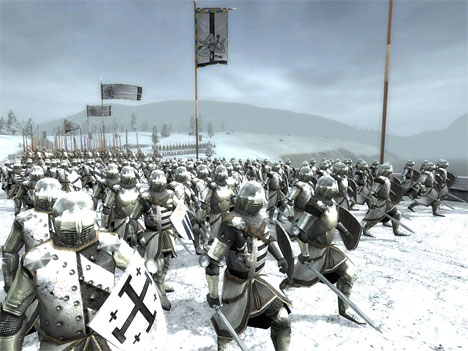
“Make two silver trumpets for yourself; you shall make them of hammered work; you shall use them for calling the congregation and for directing the movement of the camps.” Numbers 10:2
The Bible Matrix aligns a lot of apparently unrelated incidents. When certain things appear repeatedly at the same point in the structure, we can confidently conclude, despite the earnest protestations of our learned friends, that these relationships are trustworthy indicators of the symbolic meanings God has given to the corresponding things. Liberal scholars believe that the idea of resurrection was “developed” by Hebrew theologians over the centuries. This is because they fail to see the contant symbols of the coming resurrection beating throughout the Old Testament in types and dark sayings. The drums reach a crescendo in the later New Testament epistles until the trumpets finally blast a terrifying staccato in the Revelation. This is the first resurrection. Continue reading
Comments Off | tags: AD70, Feasts, Josephus, Postmillennialism, Resurrection, Revelation, Silver, Systematic typology, Trumpets | posted in Bible Matrix, Biblical Theology, The Last Days











